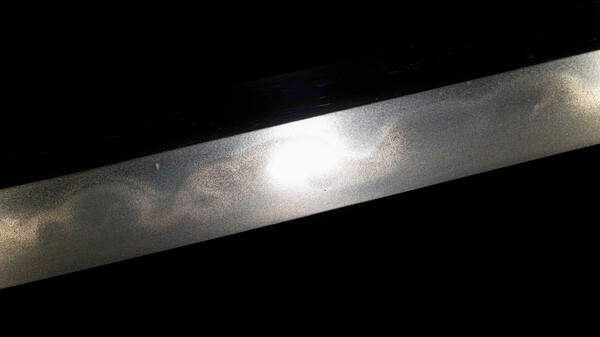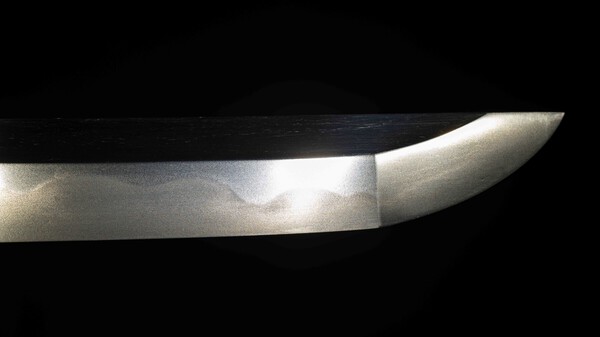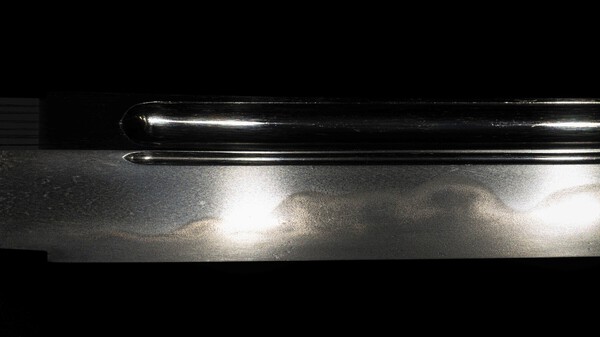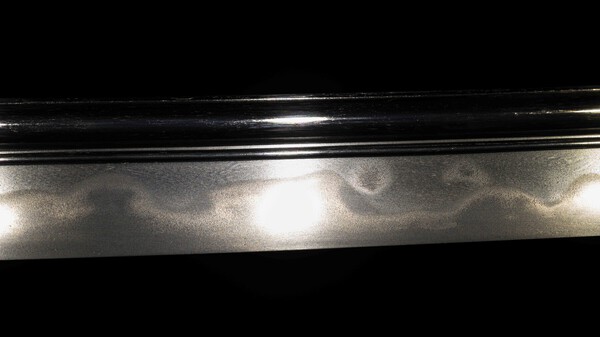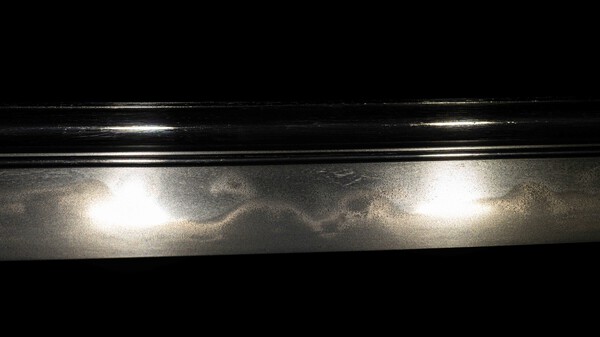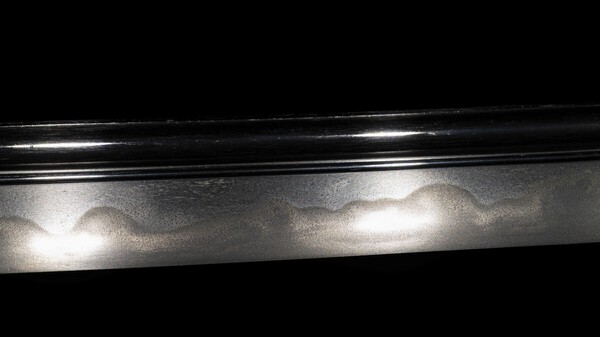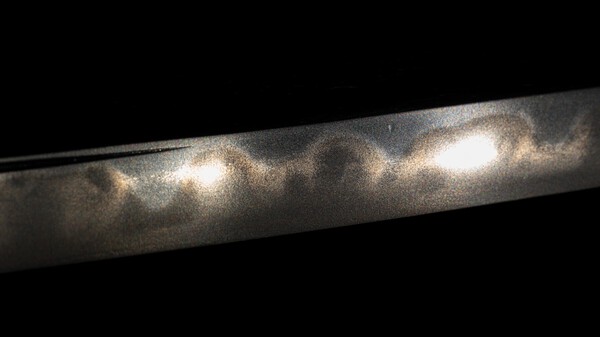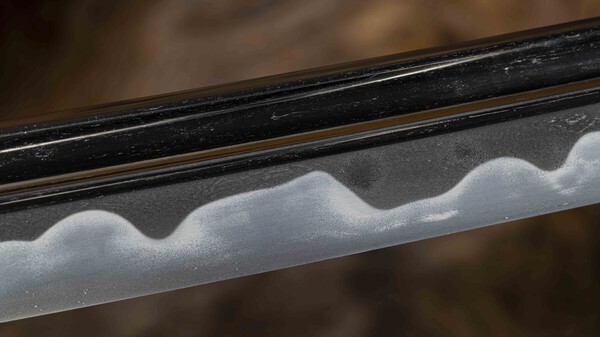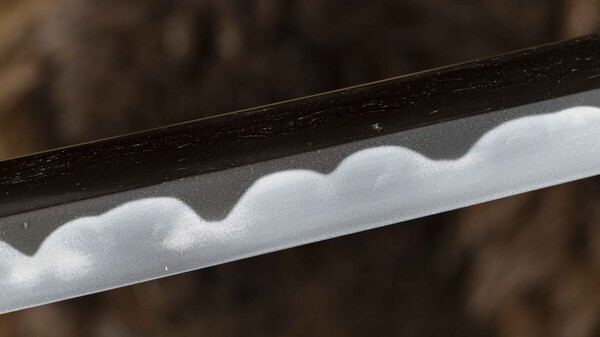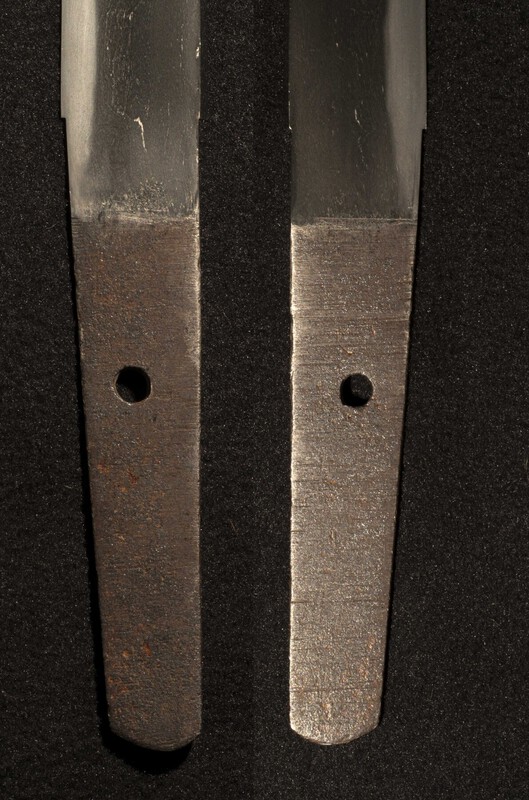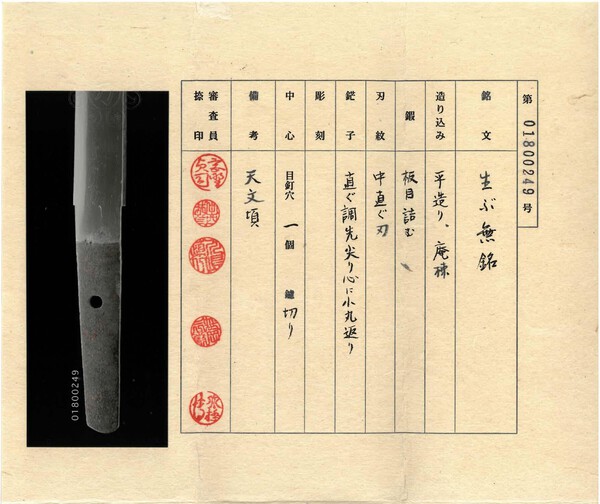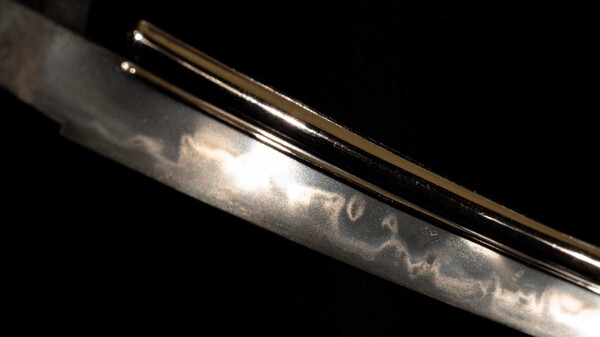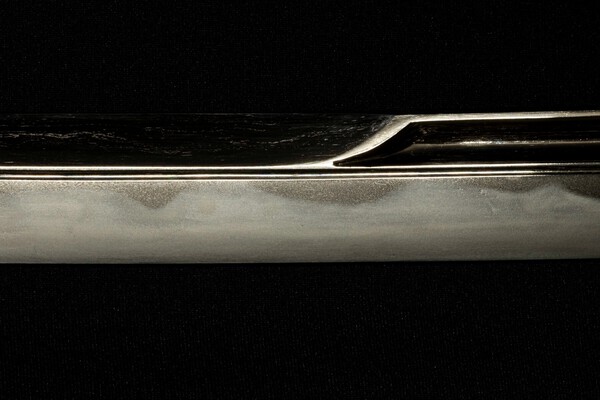-
Posts
444 -
Joined
-
Last visited
-
Days Won
4
Content Type
Profiles
Forums
Events
Store
Downloads
Gallery
Everything posted by Brano
-

FS a long Koto signed Tachi from Osafune School Late Nanbokucho / Oei era
Brano replied to Brano's topic in Sold Archive
On hold -

FS a long Koto signed Tachi from Osafune School Late Nanbokucho / Oei era
Brano replied to Brano's topic in Sold Archive
Thanks Michael for pointing out my mistake Corrected :-) I was trying to use X-ray to identify Mei Special X-ray for identifying defects in welds Unsuccessfully -
I am offering for sale a long Koto signed Tachi from Osafune School Late Nanbokucho / Oei era The tachi is signed "Bishu Osa", the remaining kanji are unclear NBTHK Tokubetsu Kicho papers and Sayagaki by Kanzan Sato - Bishu Osafune Masamitsu - Late Nanbokucho NTHK - Bishu Osafune Iemori - Oei era Both smiths are Bizen Kozori School The blade is with magnificient shape with strong clear Utsuri Nagasa 75.4cm Sori 2.4cm Motohaba 3.1cm Sakihaba 2.1cm Kissaki 2.7cm Nakago nagasa 23.1cm The blade its just a little suriage ( 6-8 cm ) Incl. a very good quality Shirasaya Price ... SOLD + PP fee or SEPA payment Including postage within the EU The complete photo gallery can be found here https://eu.zonerama.com/Nihonto/Album/6292432
-
Promised few photos after repairing an old polish Toranba present sea waves In the case of this blade, it is like a stormy sea in my opinion
-
I recently sent the blade for new polish to Mr.Massimo Rossi, because the original polish was unsuitable for me In order to improve sales Today the blade came back to me and I must say that I thank the providence that the blade did not sell I end the sale and the blade remains part of my collection When I find the time and take new photos, I will publish what a sensitive and professional approach of a professional togishi can do This way too - Grazie mille Massimo
-
It may be emphasized that there is no reason to wait If you participate in the project, the amount will only be reserved on your credit card If a sufficient number of applicants is found by May 13, then a payment will be charged and it will be confirmed Japan Art Expo 2022 In case of insufficient interest, the exhibition will realize and no fees will be charged
-
I have a dream to add one Naginata to my collection for a long time In the end, I succeeded and I think it's quite a nice piece So I share just for the pleasure of the eyes of nihonto fans Hizen Shodai Masahiro Mei: Hizen no Kuni Kawachi Daijō Fujiwara Masahiro Kanbun yonen nigatsu kichijitsu (February 1664) Nagasa: 40.8 cm
- 11 replies
-
- 29
-

-

-

-

-
Reduce to 1.600 EUR incl. shipping in EU
-
Reduce to 26.000 EUR
-

Great experts in Catawiki. Does anyone know the fools?
Brano replied to YOJIMBO's topic in General Nihonto Related Discussion
The reason is prosaic When you go to sell an item through Catawiki, they require you to fill in the item details And the problem is that you only have the opportunity to choose one of the options offered It is possible to enter your own description, but it is a bit difficult And because most people are a little lazy, they choose some of the predefined options And the result is like this -
mumei, NTHK attribution Bizen Kiyomitsu (ca. 1570) Nagasa 25.4 cm Motohaba 24.8 mm Motokasane 6.4 mm with shirasaya Price 1.800 EUR + PP fee Located in Europe Price incl. shipping cost via EU
-
Offer for 28.000 EUR incl. shipping within EU
-
I got an offer to buy a great koto blade so I have to say goodbye to the best piece in my collection Tsuda Echizen-no-kami SUKEHIRO 津田越前守助広. He was born in Kanei 14 (1637), Uchide town, Settsu domain, real name Jin'nosuke 甚之丞. He learned from the 1st gen. Soboro SUKEHIRO そぼろ助廣 to realize his ambition to be a swordsmith to obtain Echizen-no-kami 越前守 title in Meireki 3 (1657). He achieved success and won fame and in Kanbun 7 (1667), Aoyama Inabanokami Munetoshi 青山因幡守宗俊 (Karo top-ranking samurai officials) of Osaka castle employed him as a retainer with a 10 fuchi salary. At the age of 31st to 38th years old - from the eighth month of Kanbun seven (1667) onwards - he executed the dated signature of the ura side in grass script and applied a keshō to his yasurime and after 38 years old - from the second month of Enpō two (延宝, 1674), he executed the signatures of both sides in grass script His general workmanship transformed from Choji-midare of smaller clove in his early years then roundish gunome or gentle wave Suguha and surging waves of Toran-ba in his later age. He was a dominant smith in his time, has been highly prized as the most superior swordsmith to have a great impact on all swordsmiths in later ages. Died young in Ten'na 2 (1682), was 46 years old. The exceptional position of this swordsmith sufficiently confirms its ranking Fujishiro: Sai-jo saku Hawley: 100 Toko Taikan: 25 mil Yen Yamada Asaemon, who was the official sword cutting ability examiner and executioner of the Tokugawa shogunate, published a book "Kaiho Kenjaku" (懐宝剣尺) in 1797 in which he ranked the cutting ability of swords. The book lists 228 swordsmiths, whose forged swords are called "Wazamono" (業物) Tsuda Echizen Sukehiro received the second highest award Ó-wazamono (excellent) which only confirms his exceptional skills This sword is in the unique style of Naginata-naoshi Katana Despite much effort, I was unable to find a second blade from Sukehiro 2nd in this unique style Wide and thick, impressive shape from which radiates strength and respect Mei: Echizen no Kami Sukehiro Nagasa: 74.5 cm Sori: 1.8 cm Motohaba: 3.2 cm Sakihaba: 2.1 cm Kissaki: 3,3 cm Motokasane: 7.5 mm Nakago: Ubu, 2 mekugi-ana, zaimei Habaki: single silver with high quality shirasaya NBTHK: Tokubetsu Hozon Kitae is well grained ko-itame with ji-nie. Beautiful texture representing Osaka jigane Hamon is nie deki gunome midare toranba style continue from the hamachi to the Kissaki area The nakago bears the five character signature of Echizen no Kami Sukehiro, which was in use around Kanbun 6 ( 1666 ), the last year before taking up work at the Osaka castle. This sword is one of the first Works that he made in establishing his Toranba style and together with the unique shape represents an exceptional opportunity to own a blade from one of the best Shinto swordsmiths 32.000 EUR + PP fee or SEPA payment incl. shipping cost within EU Photos at Hi-Res are available here https://www.zonerama.com/Nihonto/Album/6268825
- 13 replies
-
- 16
-

-

-

-
Amazing news Yurie-san Congratulations. The book was found on Amazon easily and is already on its way to me
-
I'm also a little confused by the choice for Shinshinto In my opinion nakago shows an older age at the bottom and see a change in corrosion for a gradual shortening over time From the sugata I would say koshizori which leads me to the late Kamakura But matsukawa, ko-nie ... I'm really curious about the result
-
Nanbokucho, Soshu, Kaga - Sanekage
-

Uchiko according to Kojima Hiroshi
Brano replied to Marius's topic in General Nihonto Related Discussion
Yes Jean I fully agree with what you wrote When I use the term grinding, it does not mean that the togishi will use a coarse-grained tool -

Uchiko according to Kojima Hiroshi
Brano replied to Marius's topic in General Nihonto Related Discussion
From what I've heard - the handle is made of sediments that are formed when grinding the blade (the finest particles are used) And they are finer than the graininess of the finest stone Therefore, gradually correct using uchiko for blades in sashikomi will gradually improve the visibility of activities in the blade It takes many months or a few years And paradoxically by using the uchiko ofte, you will not achieve this result faster. On the contrary, you can cause damage -

Uchiko according to Kojima Hiroshi
Brano replied to Marius's topic in General Nihonto Related Discussion
Marius - you are opening a controversial topic that has been here several times and will probably be in the future :-) I think everything is said in the article you are referring to I am still just a newcomer and I will be for a long time. So it's just my subjective evaluation For blades with hadori polishing uchiko is not explicitly recommended because it gradually removes the cosmetic effect of hadori The use of the uchiko is very fine grinding Polishing itself is actually grinding For blades in sashikomi, the correct use of the quality uchiko is fine and even improves the visibility of activities in the blade But - according to the information I have, the number of togishi who can make traditional sasahikomi is very limiting and the vast majority of blades on the market are in hadori I would compare it to the routine work of most men - shaving The use of traditional stright razor brings an excellent result Provided that the razor is perfectly sharpened (quality uchiko) and the correct technique is used Otherwise, the result is known in advance - and we still do not want to run to the doctor The result with the shaving razor is satisfactory and significantly safer -
Nr.11 sold I offer postage within the EU in the price of the book
-
Thanks a lot Wim
-
I'm looking for a list of contents (index) for Tokubetsu Juyo Nado Zufu 24 Can you guys please help me someone and send a scan? Thanks a lot in advance





